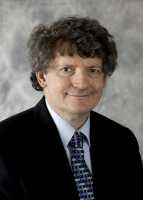MedicalResearch.com Interview with:
Dr. Miikka Korja
Chief Innovation Officer
Neurosurgeon
Associate Professor of Neurosurgery
HUS, Helsinki University Hospital
MedicalResearch.com: What is the background for this study? What are the main findings?
Response: Helsinki University Hospital, one of the largest hospital organizations in industrialized countries, has a very long history in conducting studies on brain aneurysms and aneurysmal subarachnoid hemorrhage. The one and only study on the natural history of ruptured aneurysms has also been conducted in Helsinki 50 years ago (published in 1967). The term “natural history” refers to an approach where the cause of a patient’s disease is not treated at all. In this case, it means that ruptured aneurysms in patients with devastating brain hemorrhage, aneurysmal subarachnoid hemorrhage, were left untreated.
Therefore, these patients have a high risk of a rebleeding from the once ruptured aneurysm. As ruptured aneurysms are nowadays unexceptionally treated, if the patient survives the primary bleeding event, such natural history studies are impractical to conduct.
We wanted to update the 50 years old data by using a historical patient registry. Back in the old days, many of aneurysmal subarachnoid hemorrhage patients were not treated because for example surgery was considered too risky or patients were classified as too old for surgery. By using the historical data, we showed that aneurysmal SAH, if not treated, is even more devastating disease than believed. Based on our results, we can state that 75-89% of today’s patients die in a year without treatments.
(more…)

